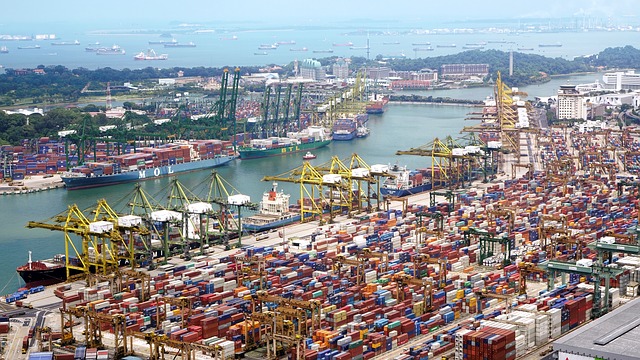
International shipping is conducted daily throughout the world but comes with its problems when communication between the parties breaks down, meaning common mistakes are repeated.
One major area that needs to be correctly adhered to is transportation documents.
In this article, I look to give hints and tips to make sure your shipment clears customs easily and with no delays or fines.
Upon purchasing goods from a supplier you may well be reliant on them completing paperwork at their end correctly that meets NZ customs rules and regulations, but all too often, the paperwork may not hold upon arrival.
In many cases the supplier will adequately complete all relevant documents for the release of the sea freight from their country, focusing more on their customs rules for shipping than the receiving customs.
A supplier is not so interested in the final destination clearance, they are focused on delivering what has been paid for and ensuring they have adhered to all international shipping requirements, this is not their fault, but unless they ship regularly to NZ they may not be aware of some of the rules and regulations at the NZ end.
NZ customs brokers regularly receive incomplete documentation or documentation with mistakes, any mistakes will result in delays and possible fines at the port.
A common mistake is when the importer who is declared on the documentation is the Director of the company that paid for the goods. However, with NZ customs the entity who is registered is the limited company, also boasting the same director, this happens every day.
Customs have to follow rules and although this may make sense to you if the names don’t match it gets flagged as incomplete documents and will cost you.
If you are using sea freight for expensive goods it is advisable to use a customs brokerage, they may be an additional expense but not compared with delays at port, they will ensure all documentation is completed correctly.
Other aspects with sea freight is ensuring that you move the goods on time otherwise you face being penalised for cargo storage at port.
A customer brokerage will ensure the consignee, being the shipper on the docs is the same on the commercial invoice and throughout all other documents relating to the shipment.
If it is a registered company, they will ensure that the supplier mentions this throughout all documents in unison and they will provide a NZ customs client code.
When it comes to trying to recover duty if it has already been charged, this is something that can be done, but it will involve contacting government agencies and that is a road you don’t want to be going down, always use a customs brokerage, as trying to get that reversed, although not impossible will be at least somewhat time-consuming and frustrating.
Remember is a lot harder to reverse customs clearances once they have been logged and you’ve then found a mistake.
At this juncture, another tip is to check with your customs brokerage that the correct amount of tax is being paid, as human error can play a role, bear in mind you are the importer, therefore responsible for compliance with tax rules.
Human error can happen at any time, so be sure that an extra pair of eyes and ask questions to ensure any errors are spotted before paperwork is filed and no surprises at the port.
Before submitting any documents, double-check everything you can, assuming you are busy running your business and don’t have time, you can rely on a professional freight forwarder and customs brokerage.
However, just for the first couple of shipments, take the time with them to get an explanation of how the system works, it’s good from time to time to be able to do a spot-check yourself especially if your cargo differs in the future.
A common question is what are the charges for smaller shipments of items valued under NZ$2000?
Please note there are different factors at play, but as far as customs fees are concerned you should look to allow a minimum of 15% import GST, (NZ tax) so in this case NS$300 with a customs fee of around NZ$100 and depending on the cargo you may also have duty on top of that.
Of course, these are estimations as the costs vary depending on the country of manufacture of the goods and what category the goods come under.
You have three defined options:
1. Go to government agency websites and spend time to get everything you need together
2. Consult an experienced local customs brokerage
3. Physically go to a local government office or NZ customs
A local customs brokerage will not only take the stress away, if you are looking to conduct regular shipments with them they will also likely give you some free tips about keeping your costs down during certain times of the year.
Their information will be more comprehensive than what you can find online and will be specific to your shipment.
If you decide you want to keep the costs down and are confident not to use a broker, the customs offices will always have useful brochures and leaflets and should be able to answer questions over the counter.
Air Freight
Air freight can be tricky as if you have more than one shipment close together it has to be clear if they are to be charged duty as one shipment or three separate shipments for example.
If you have more than one air freight shipment arriving and they arrive close to each other NZ customs will charge for one consignment, until recently importers tried to minimise their exposure to taxes by arranging 3 smaller air freight shipments.
However, in the last few years, NZ customs and NZ post have made vast upgrades to their tracking systems to ensure they are collecting all relevant taxes. So it is not advisable to try this as they may stop all the shipments and ask you questions.
If you have to split any air freight, it is better to ensure you have one commercial invoice, paid at the same time, close to or on the same date.
Frozen Goods
When using international shipping to import perishable items be prepared for the customs clearance to be taken care of, but you will normally have to organise the freight.
The supplier usually books it directly with a shipping line especially for full containers, and this comes at a much-reduced cost.
Be sure to consult with a customs brokerage when importing perishable goods to avoid ANY mistakes, it is more complex than normal cargo as you also have health and safety requirements to follow, and that brings the NZ MPI into the equation.
So consult with a local customs brokerage before you pay for any sea freight or air freight and make any mistakes with the documents.
If you are using an experienced freight forwarder who regularly ships to NZ, then they should know how to package everything and be familiar with the requirements, this will help alleviate any trouble at the port.
On the subject of multiple air freight or sea freight shipments, if you have shipments from multiple suppliers that are moving from Australia you should ask your customs brokerage about co-ordinating to have them arrive as a combined order.
This will save you on customs clearance charges.
However, this is a prime example if someone is new to international shipping should not look to start with a complex order like this.
If you were a seasoned shipper then maybe you could handle and coordinate this yourself, but for someone busy running a business and is still considered a novice, leave it to a customs brokerage who is in the know.
A Simple Breakdown
If you are getting charged NZ$200 per consignment and you have three different shipments from three different suppliers NZ customs do charge per clearance, but in this case, the fee would still be NZ$200, not NZ$600 as you pay only once.
Taxation, in this case, would remain the same at 15%, plus any duties, and the one-off customs transaction fee which is around NZ$50.
Conclusion
When you start out using international shipping to import to New Zealand it is highly recommended that you use a customs brokerage to evaluate and guide you through the process. As I mentioned earlier it never hurts to take an active interest in how everything works and with more experience, you can eventually go on to manage things yourself.
The trick to saving money on sea freight and air freight is to combine shipments if you have more than one, this saves you handling charges. Always ask about what options you have as in shipping you always have slow and cheap or fast and expensive, so weigh that up depending on how urgent your cargo is.
Usually, a freight forwarder presumes you need the goods quickly and will naturally give you the fastest option, which won't be the cheapest. So be smart to get the extra help and don’t make the same common mistakes as others are doing right now. Good luck.


